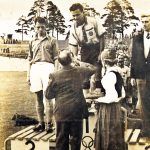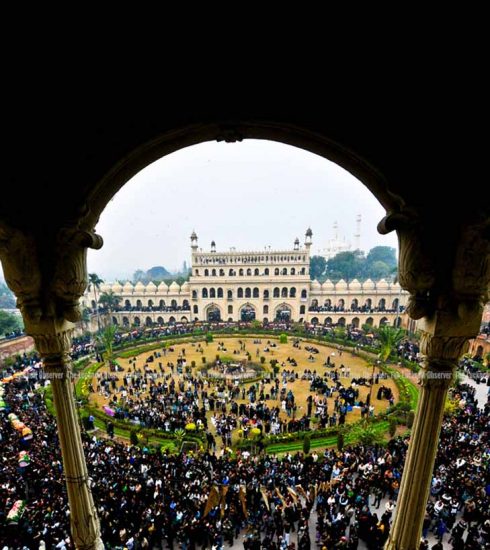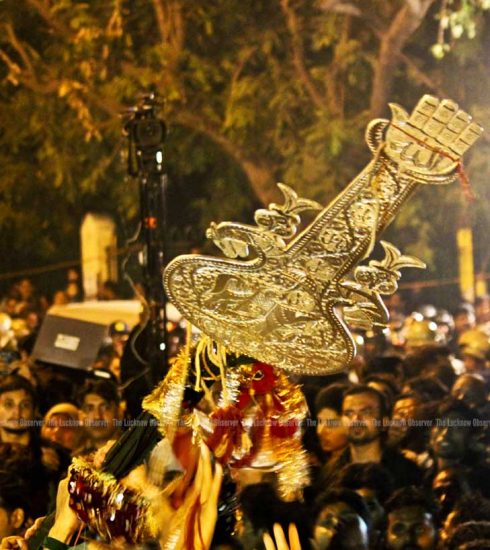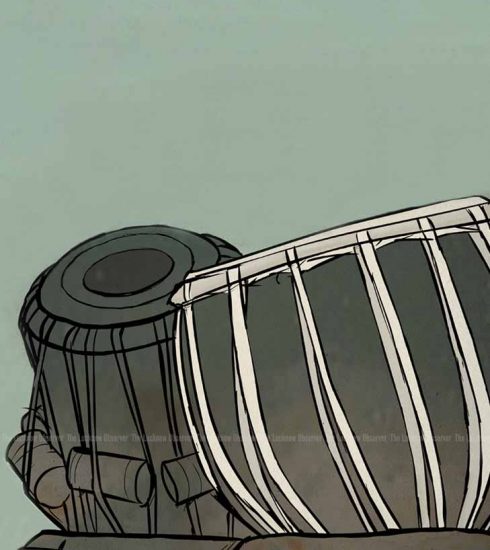Holi
Heralding change of season with colors
Come Holi and the streets will be washed in joyful colours, frenzied revellers brandishing their mirth to the ever present blare of Rang Barse in Bachchan’s voice of his epic misdemeanour, following us persistently through each living Holi. There is no escaping these beaten Bollywood tracks in Holi, the toll only threateningly and slowly increasing over the years to include fresher contributions.
The word itself means burning, the wood burnt in the cross section of four streets (Chauraha) decorated with streamers and the implanted with signalling the tree about a month before symbolizes the ancient Hindu legend of Prahlad surviving the clutch of his aunt Holika’s conspiring fire for inciting his father’s angst by worshipping lord Vishnu and not himself, by the lord’s munificent protection for his ardent devotee.
On the last full moon night, Purnima of the Hindu month of Phagun the symbolic fire is lit asserting evil’s undoing. As the smoke cleanses the night air, dispelling the cold with its warmth, people gather around it and offering the token new harvest of wheat and the first tiny smear of abeer before the day of revelry. The Arandi or castor tree adorns the site and is placed around Basant Panchmi.
That is the only solemn part of the whole affair-thereon it is mayhem, frolic, unmerciful colour tirades, blaring loudspeakers-roughly translated as fun.
It’s a day of reconciliation, of forgetting old disputes and turning over a new leaf, of giving in to the spirit of brotherhood and celebrate. The Holi in Awadh bears a proud tone of distinction, courtesy, its nawabi predecessors, who were the stalwarts of communal unity, and probably spirited revellers before rulers. It is because of them that it’s a secular affair, Hindus and Muslims, taking part in the festivity with equal gusto. Being natural lovers of amusement, how could they let this great sanction of riotous festivity go unmarked, Nawab Wajid Ali Shah hosted grand Holi parties that were the talk of the town.
An incident registering the hallmark sprit of Lakhnawi adab and human regard is encountered upon in their annals. The tale in the character of a fable goes thus. Once Muharram, a day of mourning for Muslims coincided with Holi. The Hindus decided to forego the celebrations in keeping with the sombre occasion, while Muslims decided they would not observe Muharram as it would diminish the Holi festivity. Wajid Ali Shah, on learning about this affable impasse, allowed observation of both during different parts of the day.
Another myth about the beginnings of Holi involves the dark skinned Lord Krishna in his adolescence. He moaned his dejection to his mother certain that the fair skinned Radha would not find him suitable, poisoned blue by the witch Pootna. To appease her young son Yashoda told him he could colour Radha in whatever hue he chose. The boy went and smeared abeer on Radha and from thereafter, Radha, Krishna and his admirers Gopis indulged in the joyous practice of playing Holi.
Variants of festivity are spread across the city, it is celebrating Krishna’s glee that people in some parts of the city, building on to his mischiefs indulge in breaking a handi, that symbol of his mischiefs, stealing the sweet butter that he so relished. Sindhis perform a little known ritual around the Holika fire, in which rot a sweet form of chapatti, cotton, and a piece of white thread are burnt placed on bricks and cow dung cakes. If the cotton gets burnt it predicts a rise in cloth prices while in case of the rot, grain prices; probably a farmer’s practise to ascertain forthcoming trade trends. The tiny thread amazingly is also significant as it remains unscathed every time as did Prahlad when his evil father asked him to embrace a heated pillar. The obedient boy went forth bravely, on seeing a little ant strolling on a piece of thread, he felt reassured nothing would happen to him if the pillar did not harm the little creature it could not harm him with some divine intervention.
The grandest celebration takes place in Chowk where a huge procession of revellers dance away swaying in clouds of colours and similar tinted happy faces, a blend beyond religious boundary; camels and elephants joining the fray, drummers beating fervid excitement.
All the activity is supposed to drive away the languor imposed by the dry winds and changing weather.
It is one festival that transcend all boundaries, for it only serves a universal spiritual code with its mythical founding. It is the festivity, enjoyment and abounding excitement Holi is known for, therefore inviting indulgence by people of all faiths and origins an assimilation unique to Lucknow is found in the Muslim observation of the festival of ‘Nauroz’ with colours since it falls on 21st March, around the same time as Holi every year. The Urdu poet Mir wrote of Lakhnawi Holi:
Rang Saubat Se Ajab Hain Khurd-o-Peer
Qumqumay Jo Maarte Bhar Kar Gulaal
At every nook the Holika burns and people splurge in play, meeting friends and relatives, neighbours, colouring each other in festive spirit, dancing, rejoicing, starting from morning till noon when everyone except a persistent frenzied few retire to the annual tedious task of taking off the stubborn colours . Funny faces with remnants still show up past the day keeping the picture colourful in the evening people dress up in new clothes and visit loved ones. It’s a time for relaxation and relief from monotony of work life routine.
Holi delicacies are a relished part, gujhiyas and papads passing coloured hands. Everything is now available in stores but earlier whole households used to submit to the task of creating these perfect snacks from scratch, rice, potatoes, pearl sago, culinary tools cloth spreads, dexterous hands of mothers, and eager helping children, working against the heating sun were all ingredients of that final priceless concoction.
The hues of Holi have changed over time, literally and not so. Once the colours as the food was subject to manual preparation, flowers and natural ingredients such as turmeric, flame of forest, employed to lay the pigments. The present commercial artificial colours pose unpleasant results with the harmful chemicals present in them causing skin infections or entering eyes, and people are filing a return to the natural herbal colours.
Water is an inextricable and crucial part of the Holi celebrations, pre and post the colour playing scenario and huge amounts are required to quench the need. However it is also true a lot of it is only wasted and for no good with people all around struggling with water shortage, more and more people are making the move to a waterless or ‘Dry Holi’, no liquid colours, only the abeer to save this important resource and hopefully the trend only catches on and speedily. Awareness drives are carried out in schools to save both the water and also the forests by burning only a token or a more feasible alternative for Holika but that has not yet been accepted wholly and has met with religious friction.
The land of tehzeeb saw an extremely friendly and joyous Holi with people throwing colours on strangers but it was all taken in good spirit, and done and received gently and politely, no one minded the children’s tricks, water balloons or pichkaris (which back then used to be metallic and extremely heavy issuing only a thin spring after much effort- a small ‘water tanker’ was their most ferocious weapon). Children would hide in their balconies and pull the ‘topis’ of passers-by with needles from handloom machines fashioned as a hook; the central and most dedicated team of Holi lovers would go around collecting chanda or donations for organising the local festivities; some locales held special competitions for the occasion.
Sadly, a lot of people now see this festival as an opportunity for unwarranted intrusion, coaxing the unwilling, and using the festival as a wrong sanction indulging in misbehaviour, all past gentleness and grace forgotten. Such people have tainted the pious and pure image of Holi which has always been a backyard affair but people meet up with friends to share the happiness; elaborate Holi parties or Holi Milan Samaroh are the norm now, adding friends, music, colours ,food and dance to create a successful mixture. Ill-minded people take celebrations to mean consumption of alcohol and the ensuing reckless, indecent behaviour with no regards for courtesy. With such celebrations going on in every corner of the city, these anti- social elements spoil the mood. Stepping out of the house becomes a hazard with them around. And the celebration spots become dark dens waning the goodwill and that is why it has earned condemnation.
To rid the festival of this demeaning shade and revive its only too inclusive, ecstasy embracing true form should become the happy responsibility of anyone who has ever enjoyed its vibrant gifts. May the words of the Urdu poet Saghar Khayyami be the song and soul of each reveller:
Imaan Ko Imaan Se Milao
Irfaan Ko Irfaan Se Milao
Insaan Ko Insaan Se Milao
Gita Ko Quraan Se Milao
Dair-o-Haram Mein Ho Na Jang
Holi Khelo Hamare Sang
Nikita Gupta
Writer is student and her passion is painting
(Published in The Lucknow Observer, Volume 1 Issue 12, Dated 05 March 2015)








